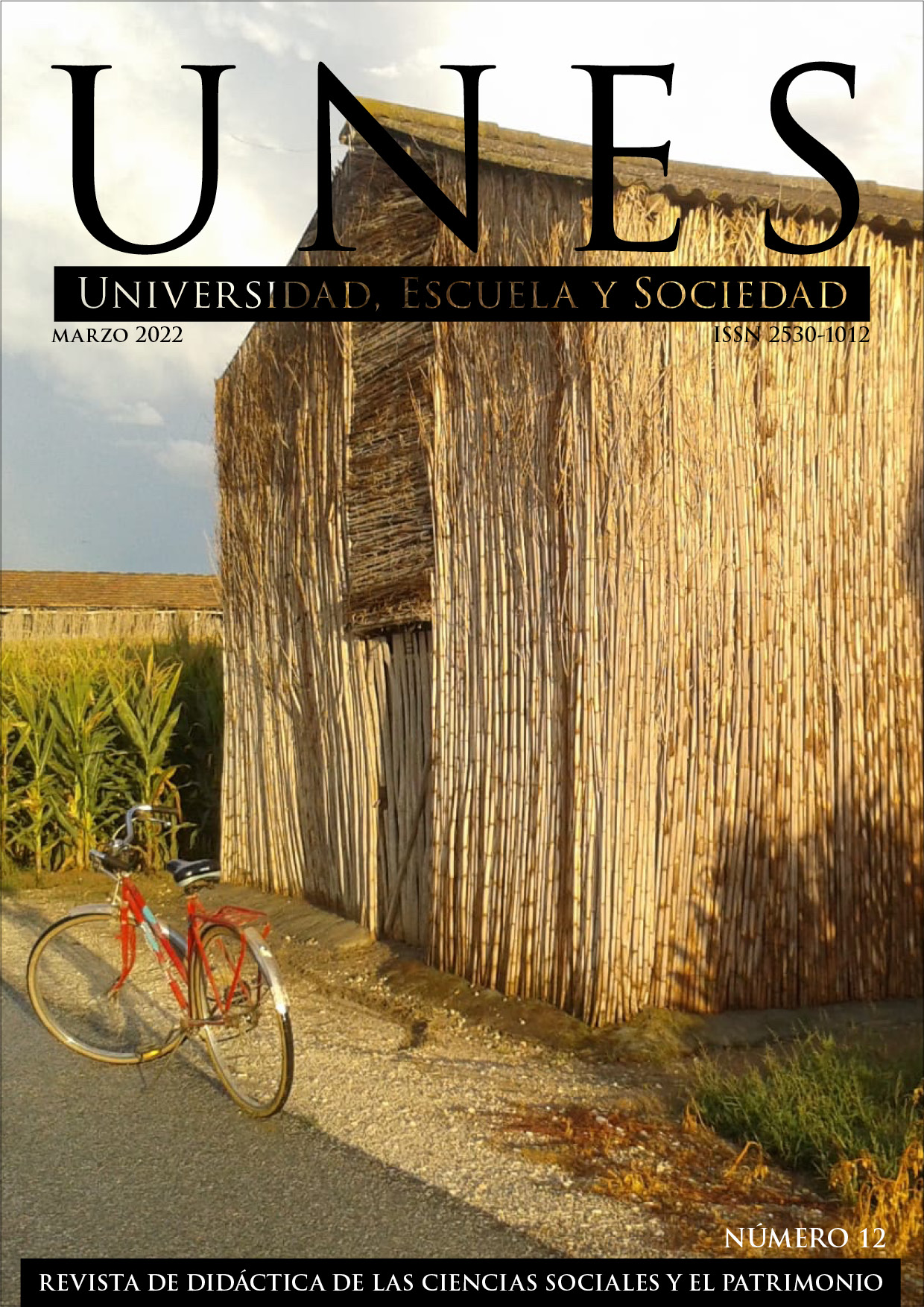Competencia intercultural para docentes en la educación bilingüe de inmersión en español en Minnesota, USA. Caso: Casa de Corazón
DOI:
https://doi.org/10.30827/unes.i12.22425Palabras clave:
Bilingüismo, interculturalidad, desarrollo sostenible, formación docenteResumen
Se valida la pertinencia de la interculturalidad del programa de educación bilingüe de Casa de Corazón (2002-2020), en sus iniciativas para la formación continua de sus maestros, basado en lo que sustenta Ipiña (1997) y la UNESCO (2017). Esta investigación presenta una serie de coincidencias en el marco de la competencia intercultural de maestros y el nivel de satisfacción de las familias del alumnado del programa de educación preescolar en el estado de Minnesota (EE. UU.).
Aquí se exponen las actitudes que deben poseer los maestros que enseñan español de inmersión desde un contexto global con perspectiva pedagógica holística tal como lo sustentan Conboy y Kuhl (2013) que resaltan el impacto de la formación docente intercultural en el proceso de aprendizaje de los estudiantes.
Se presentan resultados de la correlación en los planteamientos de Ipiña y la UNESCO, con las iniciativas del programa de capacitación en competencia intercultural de Casa de Corazón. Se resaltan las coincidencias en los tres planteamientos sobre las características que deben poseer los maestros que trabajan en contextos interculturales globales.
El procedimiento utilizado para alcanzar estas conclusiones fue a través encuestas anónimas realizadas a familias, maestros y administrativos, sus resultados fueron tabulados y sometidas a la sistematización de datos para elaborar un matiz que nos permitiera llevar a cabo el análisis de los resultados mediante un estudio cuantitativo y cualitativo.
Se concluyó que Casa de Corazón es un referente de la promoción de iniciativas interculturales inclusivas y estas competencias están alineadas a la vez con el objetivo 4 de los Objetivos de Desarrollo Sostenible establecidos por la ONU (2015) que sugiere la necesidad de una educación de calidad desde contextos globales y donde se propone un plan maestro para conseguir un futuro sostenible e inclusivo para todos.
Descargas
Citas
About us, Casa de Corazon (2021), Nuestra historia. https://casaearlylearning.com/our-story/
Adam, M. (2021). Natalie Standridge and her Entrepreneurial Journey of Transforming the Early Ed Industry. https://missionmatters.com/natalie-standridge-and-her-entrepreneurial-journey-of-transforming-the-early-ed-industry/
Benalcázar, Daniela (2016). Formación de valores interculturales en los niños de 3 a 5 años de educación inicial, en un Ecuador pluricultural y multiétnico. Ed. Universidad Complutense de Madrid.
Centro Casa de Corazón (2020). We are Casa de Corazón. http://www.casaearlylearning.com/
Child Development Associate (CDA). https://www.cdacouncil.org/es/por-que-importa-el-asociado-en-desarrollo-infantil-y-como-encontrar-el-proveedor-correcto/
Conboy, B. T., and Kuhl, P.K. (2013). Impact of second-language experience in infancy: brain measures of first-and second-language speech perception. McGraw-Hill.
Get a grip on your business with EOS (2020), EOS System. https://www.eosworldwide.com/
Ipiña, E. (1997). Condiciones y perfil del docente de educación intercultural bilíngüe. Revista Iberoamericana de Educación, 13, 99-109.
Hernandez J. (2021). El currículo intercultural de inmersión en español en centros de aprendizaje temprano; proyecto Casa de Corazón (2002-2020).
Ramírez, A. (2020). La atención a la diversidad Cultural y lingüística en contextos migratorios. Un análisis desde la educación intercultural. Revista UNES. https://revistaseug.ugr.es/index.php/revistaunes/article/view/15683
Rojas, M. (2004). Identidad y cultura. Educere: Revista Venezolana de Educación. Nº. 27, 2004. 489-496. http://www.saber.ula.ve/bitstream/123456789/19911/1/articulo6.pd
Teaching Strategies, LLC (2018). The Creative Curriculum® for Preschool. https://teachingstrategies.com/wp-content/uploads/2016/07/The-Creative-Curriculum-for-Preschool-Touring-Guide.pdf
UNESCO (2017). Marco conceptual y operativo de las competencias interculturales. http://unesdoc.unesco.org/images/0025/002515/251592s.pdf
UNITES NATIONS (2015). The Sustainable Development Goals (Number 1). https://www.un.org/sustainabledevelopment/es/objetivos-de-desarrollo-sostenible/
Descargas
Publicado
Cómo citar
Número
Sección
Licencia
Derechos de autor 2022 Jansel Hernandez, Aurora Arjones Fernández

Esta obra está bajo una licencia internacional Creative Commons Atribución-NoComercial-CompartirIgual 4.0.
Los autores que publican en esta revista están de acuerdo con los siguientes términos:
Los autores conservan los derechos de autor y garantizan a la revista el derecho de ser la primera publicación del trabajo al igual que licenciado bajo una licencia de Creative Commons Reconocimiento-NoComercial-CompartirIgual 4.0 Internacional que permite a otros compartir el trabajo con un reconocimiento de la autoría del trabajo y la publicación inicial en esta revista.
Los autores pueden establecer por separado acuerdos adicionales para la distribución no exclusiva de la versión de la obra publicada en la revista (por ejemplo, situarlo en un repositorio institucional o publicarlo en un libro), con un reconocimiento de su publicación inicial en esta revista.
Se permite y se anima a los autores a difundir sus trabajos electrónicamente (por ejemplo, en repositorios institucionales o en su propio sitio web) antes y durante el proceso de envío, ya que puede dar lugar a intercambios productivos, así como a una citación más temprana y mayor de los trabajos publicados (Véase The Effect of Open Access) (en inglés).
Los autores han respetado la política de autoría de esta revista






 ISSN-e: 2530-1012
ISSN-e: 2530-1012









